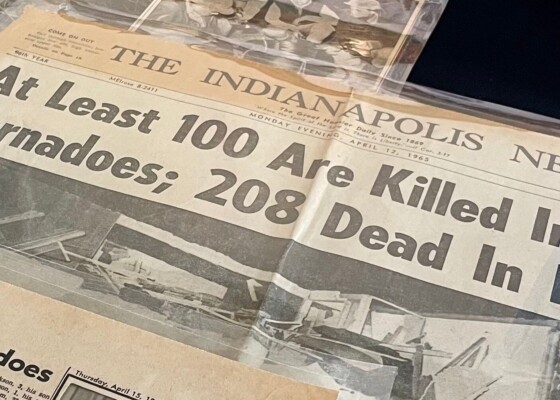Six Things We Learned During Our Quantum Leap Field Trip to the Dunes
September 20, 20171. Henry Chandler Cowles spotted the Indiana Dunes as a perfect laboratory for exploring his theories about ecology, which he called “a study in dynamics.” Our “wandering dunes,” which can shift…
1. Henry Chandler Cowles spotted the Indiana Dunes as a perfect laboratory for exploring his theories about ecology, which he called “a study in dynamics.” Our “wandering dunes,” which can shift up to six meters each year, are a perfect illustration of this ever-changing landscape of vegetation, sand, and water.
2. The first plant in the Dunes’ succession cycle is marram grass, which traps and holds blowing sand, eventually building up “ground” for more complex plants to colonize. Paula McHugh’s short poem beautifully captures this idea: “Marram marry me / Says the dune / wanting stability.”
3. Social trails, though a delightful expression of our impulse to explore off the beaten path, can be incredibly destructive in a fragile ecosystem like the Indiana Dunes. Or as writer Gary Snyder might say, “There are paths that can be followed, and there is a path that cannot—it is not a path, it is the wilderness.”
4. The Dunes, which provide globally rare habitats, are still a place of ongoing scientific investigation, especially to track threatened plant and animal species found there. Scientists have also identified a roughly 30-year cycle of rising and falling water levels in Lake Michigan that affect the Dunes. Just as they were more than 100 years ago, the Indiana Dunes are one of our state’s most significant scientific laboratories.
5. Carl Sandburg said “the Indiana Dunes are to the Midwest what the Grand Canyon is to Arizona and Yosemite is to California.” His words remind us of the eons-old geological process of their formation, which the Indiana Geological Survey explains here.
6. Will the future of the Dunes be homes and industry, or sand hills, oak savannahs, bogs and prairie? Maybe both can persist side by side, but if not, perhaps we should consider the final words of Mary Oliver’s poem “In Blackwater Woods”: “To live in this world / you must be able / to do three things: / to love what is mortal; / to hold it / against your bones knowing / your own life depends on it; / and, when the time comes to let it go, / to let it go.”
We hope to see many of you at future Indiana Humanities events, including other Quantum Leap events. You may particularly enjoy our Next Indiana Campfires series, which also combines hikes (usually not so hot and strenuous!) with literature and discussion.


